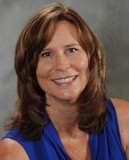By Kathryn Martin and Mary Baily Wieler
#2: Leadership Transitions: Employee Dynamics: A Road Map for Trustees
#3: Leadership Transitions: Move Forward, Be Confident – Be the Expert!
#4: Leadership Transitions: Build Relationships with your Candidates – One of Them is Your New Director
Put the museum’s best face forward… while gaining key “intel” on the candidates– From the candidate’s very first moment of contact with your museum via email application or phone call, how candidates are responded to, how they are followed up with, and eventually – how they are hosted at in-person interviews and on-boarded once they start the job – all convey what kind of an organization they will perceive you as being. Treat candidates like potential donors!
When it’s time for in-person interviews, it’s key that you help the candidates visualize working for your museum. All too often candidates leave after an interview, an offer is made and then the process stops because the candidate hadn’t taken full advantage of being on-site in order to help raise and address some of their (and their partners) questions. Time is lost as the process is delayed, or worse candidates drop out.
-If appropriate, schedule a variety of social events in order for the candidate and the Search Committee to interact in less formal situations; similar to what will occur once hired.
-Set-up a private tour with a real estate agent for all finalists – touring the community, neighborhoods, schools, answering questions that the candidate may not feel comfortable asking the Search Committee. This can be a critical step in helping to ensure that if you end up making an offer, they feel like they have key information needed to make a decision.
-Designate Transition Committee members (that are good ambassadors!) to drive, greet and host – this helps to create opportunities for quiet conversations and personal connections to develop (rather than hiring drivers, Uber, etc.)
-If appropriate, schedule meetings for candidates to meet with their future staff – both in groups and 1:1. We recommend that the staff sign confidentiality pledges at this juncture.
-REMEMBER: Confidentiality, Confidentiality & Confidentiality now includes the entire Board.
-When negotiating, remember that how you conduct yourself reveals to the candidate how it will be to work with you at the Museum. Now is the time to invest in the future of the Museum (appropriately), determine what the candidate values (it’s not only salary), and move forward.
-Once you have an accepted offer, remember to thank the other candidates. Again, you just never know!
-CELEBRATE! After the Board votes and the finalist has formally accepted and authorized the information to be made public, plan a full day of activities around the announcement. One museum recently embargoed the Press Release for 2 hours after the vote to allow the Search & Transition Committee members, staff and the new Director to make personal phone calls to key stakeholders and thank them for their input. Even a voice-mail heads-up was greatly appreciated by all.
Help the Director adjust to the move and get settled (even if they are local). - For candidates moving from another community to be a part of yours, there are myriad details they are dealing with. Finding housing, physicians, and schools can be daunting. Trustees can be a welcoming resource during this time; enabling the new Director to focus on on-boarding rather than the stress of what happens outside the office, and continually feel good about the decision they’ve made to lead your Museum!
– Board Minutes for the last year
– Board Committee Structure
– Board Manual
– Staff organization chart
– Position Descriptions
– Employee Policies and Procedures Manual
– Office and Facility Procedures
– Volunteer roster, including photographs
– Volunteer organization chart
– IRS Form 1023, Application for Exempt Status
– Copy of IRS letter granting 501(c)3 status
– Annual reports for the last two to three years
– Current and prior years’ budgets
– Two years of audit reports and management recommendation letters with contact information for the auditor
– Fund-raising event descriptions and dates
– Grant proposals
-Funding documents from foundations, corporations, and government agencies
– Exhibition schedule
– Recent museum publications, such as member newsletters and program brochures
Revisit and adapt the Transition Calendar on a quarterly basis. Continue this effort throughout the year.
Invest in their leadership – Ask the Director what they need to be effective in their first 90 days/year. Some Directors may be comfortable in asking for what they need, while others may hesitate to ask for “help.” Create an easy dynamic for this kind of discussion to occur frequently, in order to ensure they have the resources, contacts, feedback and Trustee response time they need to do the job well.
It may be a good idea to provide “First 90 Days” leadership coaching whether there is a perceived need or not. As in other industries, coaching is considered a management tool that successful leaders employ. Like an experienced captain of a ship navigating through the Panama Canal, they are required to hire an expert to Pilot them through those “specialized” waters. Strong leaders benefit from having an outside expert available to help them successfully navigate their transition (in and outside of work) as they prioritize urgent needs, position themselves in ways to benefit the museum, and lead authentically and boldly.
Build upon the Vision that you conveyed through the interim period. Create inspiring goals of Impact that the Trustees, Director, Staff, volunteers and community can work together to achieve.
And remember: Navigating transition does not end on Day One of the new Director. In some cases it can take upwards of five years.
About the Authors
Kathryn R. Martin

Passionate about helping organizations and individuals have the impact they envision, Kathryn R. Martin is a leadership coach & strategist, professional interim leader, and a frequent speaker and author on navigating personal, professional and organizational change. Martin was Vice President at Arts Consulting Group (ACG) from 2003-2015, and she has served in numerous Interim Executive Director roles, including the Linda Pace Foundation in San Antonio to launch the David Adjaye Ruby City building project; ArtPower!, the multi-arts presenter at the University of California San Diego; and Malashock Dance. Martin is currently Interim President & CEO of the Sharon Lynne Wilson Center for the Arts in Milwaukee. Martin has supervised, trained, and coached more than 20 ACG professional interim executives placed in cultural organizations across the United States. She will be a featured speaker at MTA’s Spring 2016 Forum in San Juan, PR.
Contact: 858-761-4928
[email protected]
Mary Baily Wieler

Contact: 410-402-0954
[email protected]

 RSS Feed
RSS Feed